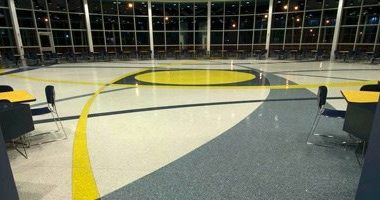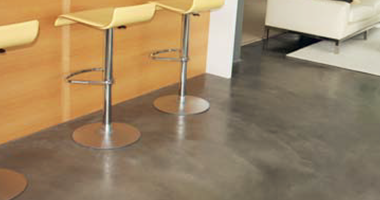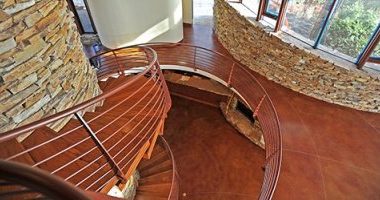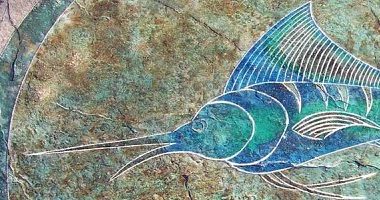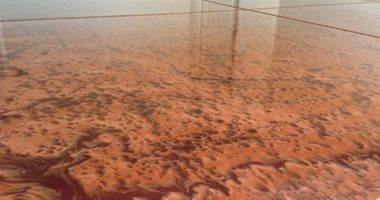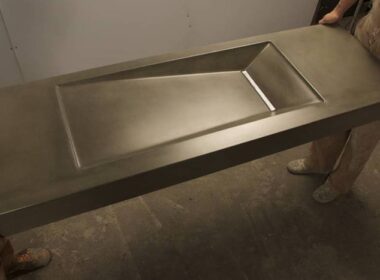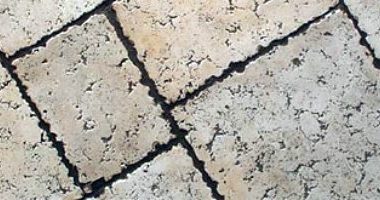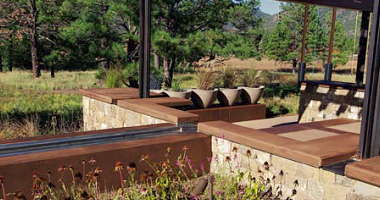Our regular feature offers two step-by-step description of a unique floor that was created with good old terrazzo.
Recipes
Ever wonder what goes into a batch of award-winning, head-turning concrete? Artisans across North America (and abroad) share their tantalizing recipes for success.
Concrete Staining Recipe: Concrete Chic
This luxe look is achieved by overlaying several super-thin coats of microtopping and dye, resulting in a finish with subtle depth and a sexy sheen.
Replicate this Concrete Floor using a Versatile Staining Technique
A versatile staining technique that creates a rich mottled finish that can be used on either newly poured, ultra-lightweight concrete or preexisting standard-weight slabs — or on a project that includes both.
Swordfish Stampable Overlay Design Recipe
This top-to-bottom (well, really bottom-to-top) overlay recipe is great for putting down a distinctive design, such as this swordfish.
How to Fabric Form a Concrete Sink
Fiberglass has been used in the precast industry for many years. The use of resin-and-glass mats to make master-mold plugs, keeper molds to hold the shape of rubber molds, and good old-fashioned production molds is standard in the industry.
Use Two Colors of Metallic Powder for a Two-tone Coated Floor
Jon Kopp, Quality Epoxy LLC, Gilbert, Ariz., says his metallic epoxy floors are all two-color these days.
One of the Best GFRC Mix Designs
Let’s start at the beginning: What is GFRC, what are its benefits and what are its downsides? GFRC stands for glass-fiber reinforced concrete. The GFRC I use is a composite of portland cement, silica sand, Forton VF-774 , Liquefaction Compound, Vitro Minerals VCAS-micronHS, water, and alkali-resistant chopped glass-fiber strands.
Recipes: Stamping & Texturing Concrete
Three unique looks achieved by seasoned veterans with stamping and texturing tools – an authentic travertine tile look, a cobblestone finish and a patio with hand-tooled brick.
High-Performance Mix Design — Understanding GFRC Mixes
GFRC is a combination of fine aggregate, cement, water, polymer, chemical admixtures and glass fiber. The key to GFRC is the glass-fiber reinforcement. The fibers take the place of steel in a wet-cast mix. They allow GFRC to develop much higher flexural strengths than typical wet-cast concrete, allowing you to cast thinner, lighter sections and pieces.
Recipe: Easy on the Eyes and the Earth
The finish on this water feature was achieved using a handful of soy-based products. It’s a great way to get a more earth-friendly surface that boasts deep, rich colors to boot. As an additional plus, the concrete is profiled with garnet abrasives, which not only ensure a low-dust blasting experience, but also give the finished surface a reliably nonslip surface.
